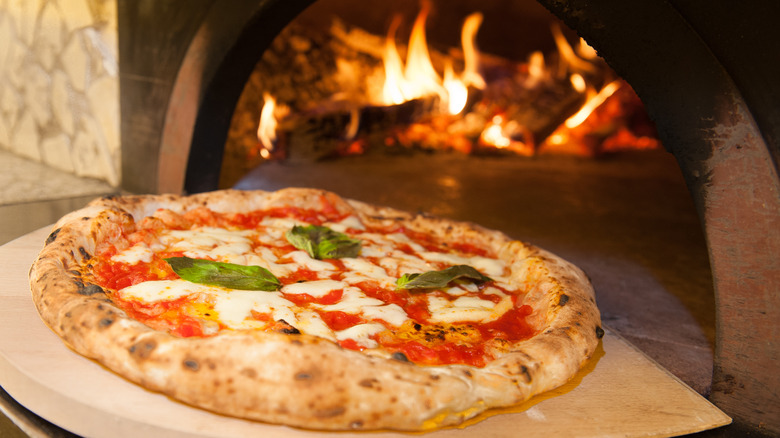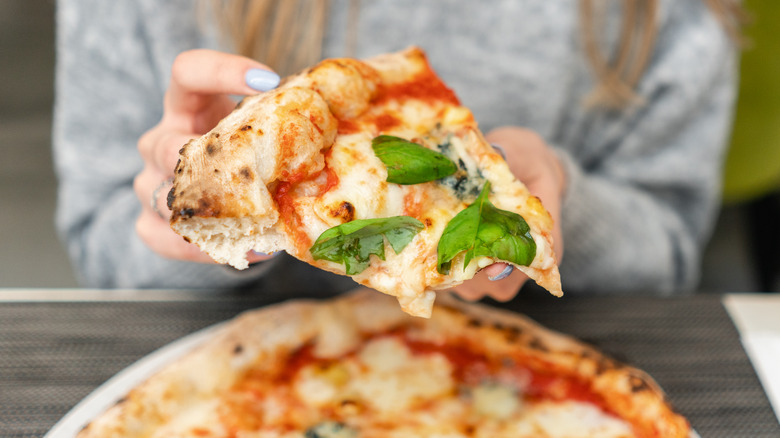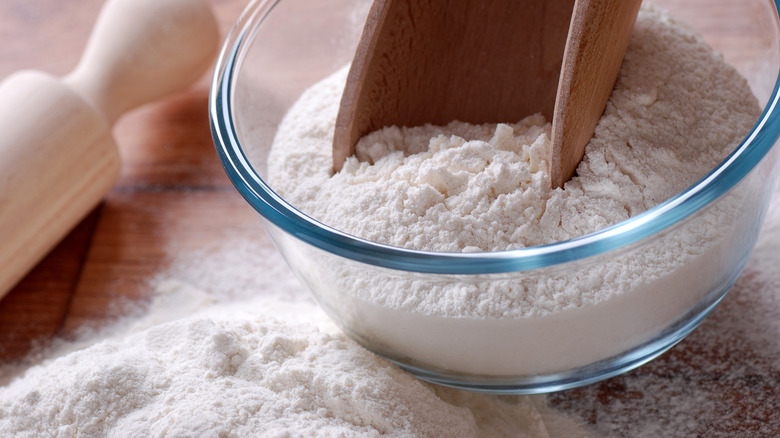The Best Flour Choice For A Homemade Neapolitan Pizza
We may receive a commission on purchases made from links.
The godfather of all pizzas is the Neapolitan. Without this initial creation, we would likely still be eating flatbreads with toppings, but nothing quite like the food that has spread around the globe today.
As What's Cooking America points out, some form of a "pizza" has likely existed since the stone age. For as long as mankind has been mixing flour and water and baking it over a fire, there has been something akin to what we eat today. History adds that a similar dish would have been common in the city of Naples, Italy around the end of the 19th century. This was mostly a cheap food used to feed the poor, but when it was requested by Italy's first post-unification king and queen — Umberto I and his wife Margherita — it would take on a new pedigree. Legend has it that the queen loved the simple pie of tomato sauce, mozzarella, and basil so much that it was named after her. It would take almost a century for pizza to catch on with the rest of the world outside of Naples, but this incident still cemented the Neapolitan style as the original.
If you have any hopes to replicate this style at home though, you'll need to have the right type of flour.
What are the qualities of a proper Neapolitan pizza?
Unlike some foods, there isn't a lot of conjecture about what makes a proper Neapolitan pizza. The craft of Neapolitan "pizzaioli," or pizza makers, has been certified as a piece of intangible heritage by UNESCO. The AVPN – Associazione Verace Pizza Napoletana – was also founded in 1984 to help protect the style and the reputation of Neapolitan pizza. The organization grants a seal of approval for pizza shops to place in their window to show that they follow the proper practices, use the right ingredients, and cook the pizzas in a manner that is reflective of a true Neapolitan pizza.
According to the AVPN, a true Neapolitan pizza has several defining characteristics. The first is that it is circular in shape, and measures approximately 35 cm across at the max because these pizzas are meant to be enjoyed by a single diner. It must also have the raised, pillowy edge known as a "cornicione" that is free from burns, and it must be soft and fragrant. The AVPN further goes on in its regulations to describe the crust as "soft, elastic, easy to manipulate and fold." The key to obtaining this pillowy soft and chewy texture lies almost entirely with the type of flour used in the dough.
The best flour for a true Neapolitan pizza
The key ingredient to obtaining the airy, soft dough of a true Neapolitan pizza is a high-protein 00 flour. The AVPN guidelines even detail it as being between 11% and 13.5% protein, but it needs to have the "talcum-like" consistency that is characteristic of 00 flour. Masterclass explains that 00 is a milling standard for flour. This designation specifies that the flour has been ground superfine, while a 0 or 1 standard would be more coarse. Giolitti Deli says that this fine milling helps the dough to stay incredibly soft and chewy. It also aids in water absorption, which is key to working with such a well-hydrated dough.
Delallo adds that while all-purpose flour is often made with a mix of soft and hard wheat types, 00 is made entirely of soft wheat. This adds to the delicate texture of the dough as well. Gozney claims that the protein content is also important, because it contributes to the dough's internal structure and ability to stretch. Having a higher protein content allows the dough to withstand the long fermentation periods without losing its integrity.
Gozney adds that while higher protein flours around 13% will typically yield a tougher crust, using fine-milled 00 will help to balance the texture, lending the crust a soft, airy quality.


